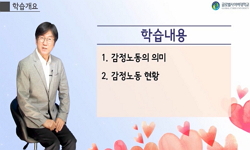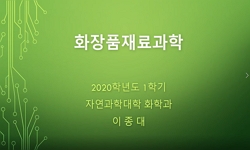이 논문은 유가와 도가를 아우르는, 기철학적 세계관에서 감정이 어떠한 의미와 위상을 점하고 있는가를 다룬다. 감정이란 인간의 바른 심성을 어그러뜨리거나 사회적 해악을 낳는 요소로...
http://chineseinput.net/에서 pinyin(병음)방식으로 중국어를 변환할 수 있습니다.
변환된 중국어를 복사하여 사용하시면 됩니다.
- 中文 을 입력하시려면 zhongwen을 입력하시고 space를누르시면됩니다.
- 北京 을 입력하시려면 beijing을 입력하시고 space를 누르시면 됩니다.
https://www.riss.kr/link?id=A60108618
- 저자
- 발행기관
- 학술지명
- 권호사항
-
발행연도
2009
-
작성언어
Korean
-
주제어
노자 ; 장자 ; 감정 ; 형이상학 ; 과학 ; 심성수양론 ; 정신양생론 ; 순수의식 ; Moral Self-Cultivation ; Nourishing-Life Theory ; Human Nature ; Mind-and-Heart ; Spirit-and-Essence ; Emotion
-
등재정보
KCI등재
-
자료형태
학술저널
- 발행기관 URL
-
수록면
247-280(34쪽)
-
KCI 피인용횟수
4
- 제공처
-
0
상세조회 -
0
다운로드
부가정보
국문 초록 (Abstract)
이러한 ‘정의 인간학’의 토대에서 형이상학적 사유로 나아간 것이 유가와 도가 및 제자백가의 공유점이었다고 필자는 본다. 그러나 도가와 유가로 대변되는 두 흐름은 도덕적 관점의 개입 여부에 따라 차이가 있는데, 바로 이것이 유가와 도가의 자기계발의 차이를 초래했다고 이 글은 논증하고 있다. 유가의 경우 ‘심’(心)을 중심으로 도덕적 자기수양이라 부를 수 있다면, 도가의 경우는 ‘정신’(精神) 중심의 양생론으로 전개되었음을 『논어』, 『맹자』, 『장자』, 『순자』, 『노자』 등의 문헌 분석을 통해 입증하고자 하였다.
유가는 성선과 성악의 주장 여부에 상관 없이 도덕적 심성(心性)의 계발에 초점을 둔다. 이는 심(心)의 사유 능력에 바탕하는 것으로서, 사회적 조화를 이끌어 낼 수 있는 윤리적 계발 프로그램을 중심으로 하며 따라서 이 글에서는 ‘심성수양론’(心性修養論)으로 규정하고자 했다. 이와 달리 『노자』와 『장자』를 위주로 하는 흐름은 ‘심’보다 ‘정신’(精神)의 허정(虛靜)한 경지를 강조하며 양생을 목표로 한다. 그래서 이 글에서는 이 흐름을 ‘정신양생론’(精神養生論)이라 규정하고자 했다. 또한 양생의 이념을 통해 기의 정신론은 한의학이라는 과학으로 이어진다고 보았다.
더 나아가 이 글에서 나는 이러한 사유의 사회적 원인을 제시하고자 했다. 유가든 도가든 제자백가의 사상가들은 불평등한 위계적 사회 속에서 생존을 위해, 자기 단련을 위해 이러한 이론들을 치열하게 제시하고자 했던 것으로 보고자 했다. 이 글은 이러한 구도를 통해 이성과 감정, 정신과 육체라는 이원적이고 서구적인 접근보다 원전들에 충실하며, 고대적 사유의 흐름에 보다 가까운 모습으로 이해할 수 있도록 하리라 기대한다.
이 논문은 유가와 도가를 아우르는, 기철학적 세계관에서 감정이 어떠한 의미와 위상을 점하고 있는가를 다룬다. 감정이란 인간의 바른 심성을 어그러뜨리거나 사회적 해악을 낳는 요소로서 인간의 본성에 속하지만 부정적이고, 절제되거나 벗어나야만 하는 그런 것으로 사유된다. 그러나 이것은 서양 근대철학적 사유의 영향 아래에서 성립된 견해이다. 나는 서구적 사유와 달리 고대 중국철학에서 만개한 인간 이해의 토대 자체가, 보편적이고 합리적인 인간상과 달리 ‘정’(情)이라는 독특한 개념에 있다고 본다. 이 ‘정’은 근본적으로 우주와 인체에 충만한 ‘기’(氣)가 우리 몸에서 울려내는 생명의 리듬이자 표현으로서, 생물학적으로나 사회적으로 감응되는 것으로 이해된다.
이러한 ‘정의 인간학’의 토대에서 형이상학적 사유로 나아간 것이 유가와 도가 및 제자백가의 공유점이었다고 필자는 본다. 그러나 도가와 유가로 대변되는 두 흐름은 도덕적 관점의 개입 여부에 따라 차이가 있는데, 바로 이것이 유가와 도가의 자기계발의 차이를 초래했다고 이 글은 논증하고 있다. 유가의 경우 ‘심’(心)을 중심으로 도덕적 자기수양이라 부를 수 있다면, 도가의 경우는 ‘정신’(精神) 중심의 양생론으로 전개되었음을 『논어』, 『맹자』, 『장자』, 『순자』, 『노자』 등의 문헌 분석을 통해 입증하고자 하였다.
유가는 성선과 성악의 주장 여부에 상관 없이 도덕적 심성(心性)의 계발에 초점을 둔다. 이는 심(心)의 사유 능력에 바탕하는 것으로서, 사회적 조화를 이끌어 낼 수 있는 윤리적 계발 프로그램을 중심으로 하며 따라서 이 글에서는 ‘심성수양론’(心性修養論)으로 규정하고자 했다. 이와 달리 『노자』와 『장자』를 위주로 하는 흐름은 ‘심’보다 ‘정신’(精神)의 허정(虛靜)한 경지를 강조하며 양생을 목표로 한다. 그래서 이 글에서는 이 흐름을 ‘정신양생론’(精神養生論)이라 규정하고자 했다. 또한 양생의 이념을 통해 기의 정신론은 한의학이라는 과학으로 이어진다고 보았다.
더 나아가 이 글에서 나는 이러한 사유의 사회적 원인을 제시하고자 했다. 유가든 도가든 제자백가의 사상가들은 불평등한 위계적 사회 속에서 생존을 위해, 자기 단련을 위해 이러한 이론들을 치열하게 제시하고자 했던 것으로 보고자 했다. 이 글은 이러한 구도를 통해 이성과 감정, 정신과 육체라는 이원적이고 서구적인 접근보다 원전들에 충실하며, 고대적 사유의 흐름에 보다 가까운 모습으로 이해할 수 있도록 하리라 기대한다.
다국어 초록 (Multilingual Abstract)
In Confucianism one's endeavors for self-improvement aimed at the attainment of the superior man that was the ideal man in Confucian tradition. According to Confucians, he was not only a leader of his society but also a moral model for contemporary people. His primary tasks were at first to cultivate himself in both morality and literal ability, and later to preceed to guide all person's steps in the path of righteousness and to pacify all things Under Heaven. I will call the efforts of moral improvement in Confucian tradition as the moral self-cultivation.
In a different way, Taoism sought after the Way and its power for their own happiness and longivity in the world. The core concept was the longivity in both the religious and the philosophical of Taoism. They developed various methods for their well-being, by which they would be reached the state of political stability and physical health. They made out many prescriptions such as non-activity, tranquility, silence, etc. And also they offered many methods for physical health such as the prevention of ejaculating essence, holding to spirit, etc. I will call the ways and prescriptions in Taoist tradition as the nourishing-life theory.
The important differences are their theoretical foundations: the one based on the mimd-and-heart, the other based on the spirit-and-essence. But, the two, the mimd-and-heart and the spirit-and-essence, related to the concept of emotions which was the expression of our inner life and the motion of ch‘i. This Schma will give a light on understanding classical Chinese philosophy, I believe.
The main purpose of this paper is to re-examine the theories of self-improvement in early China. In this paper what I mean the notion of ‘self-improvement’, is a term by which I have explained two visions of the Way as a comprehensive retainer. So...
The main purpose of this paper is to re-examine the theories of self-improvement in early China. In this paper what I mean the notion of ‘self-improvement’, is a term by which I have explained two visions of the Way as a comprehensive retainer. Some Scholar conceived two ways of self-improvement in classical Chinese thoughts as the concept, ‘self-cultivation’. But I believe that there were two trends of the theory for improving oneself in early China that had branched into two traditions, Confucianism and Taoism.
In Confucianism one's endeavors for self-improvement aimed at the attainment of the superior man that was the ideal man in Confucian tradition. According to Confucians, he was not only a leader of his society but also a moral model for contemporary people. His primary tasks were at first to cultivate himself in both morality and literal ability, and later to preceed to guide all person's steps in the path of righteousness and to pacify all things Under Heaven. I will call the efforts of moral improvement in Confucian tradition as the moral self-cultivation.
In a different way, Taoism sought after the Way and its power for their own happiness and longivity in the world. The core concept was the longivity in both the religious and the philosophical of Taoism. They developed various methods for their well-being, by which they would be reached the state of political stability and physical health. They made out many prescriptions such as non-activity, tranquility, silence, etc. And also they offered many methods for physical health such as the prevention of ejaculating essence, holding to spirit, etc. I will call the ways and prescriptions in Taoist tradition as the nourishing-life theory.
The important differences are their theoretical foundations: the one based on the mimd-and-heart, the other based on the spirit-and-essence. But, the two, the mimd-and-heart and the spirit-and-essence, related to the concept of emotions which was the expression of our inner life and the motion of ch‘i. This Schma will give a light on understanding classical Chinese philosophy, I believe.
목차 (Table of Contents)
- 【국문요약】
- 1. 동아시아적 ‘자아’를 말하기의 어려움
- 2. 『장자』에서 ‘정신’(精神)의 개념
- 3. ‘정신’(精神)의 길: 『장자』, 『관자』, 『회남자』
- 4. ‘마음’(心)의 길: 『순자』와 유가
- 【국문요약】
- 1. 동아시아적 ‘자아’를 말하기의 어려움
- 2. 『장자』에서 ‘정신’(精神)의 개념
- 3. ‘정신’(精神)의 길: 『장자』, 『관자』, 『회남자』
- 4. ‘마음’(心)의 길: 『순자』와 유가
- 5. 『장자』의 무정(無情)한 자아: 신비주의 순수의식인 가, 정신양생론인가?
- 【참고문헌】
- 【Abstract】
참고문헌 (Reference)
1 박원재, "老莊의 ‘精神’ 개념에 대한 재검토" 고려대학교 철학연구소 18 (18): 1996
2 김시천, "표정, 氣와 情을 통해 본 몸의 현상학 in : 들녘 2" 들녘 2004
3 김시천, "철학에서 이야기로―우리시대의 노장 읽기" 책세상 2004
4 리쩌허우, "중국고대사상사론" 한길사 2005
5 벤자민 슈워츠, "중국 고대사상의 세계" 살림 1996
6 김영식, "주희의 자연철학" 예문서원 2005
7 리우샤오간, "장자철학" 소나무 1998
8 왕보, "장자를 읽다―신선의 껍데기를 벗어던진 인간 장자의 재발견" 바다출판사 2007
9 김시천, "이단에서 전통으로―장자, 진유(眞儒)가 된 한 사이비의 역사" 16 (16): 2005
10 김시천, "이기주의를 위한 변명" 웅진지식하우스 2006
1 박원재, "老莊의 ‘精神’ 개념에 대한 재검토" 고려대학교 철학연구소 18 (18): 1996
2 김시천, "표정, 氣와 情을 통해 본 몸의 현상학 in : 들녘 2" 들녘 2004
3 김시천, "철학에서 이야기로―우리시대의 노장 읽기" 책세상 2004
4 리쩌허우, "중국고대사상사론" 한길사 2005
5 벤자민 슈워츠, "중국 고대사상의 세계" 살림 1996
6 김영식, "주희의 자연철학" 예문서원 2005
7 리우샤오간, "장자철학" 소나무 1998
8 왕보, "장자를 읽다―신선의 껍데기를 벗어던진 인간 장자의 재발견" 바다출판사 2007
9 김시천, "이단에서 전통으로―장자, 진유(眞儒)가 된 한 사이비의 역사" 16 (16): 2005
10 김시천, "이기주의를 위한 변명" 웅진지식하우스 2006
11 조민환, "유학자들이 보는 노장철학" 예문서원 1996
12 유평수, "열자" 자유문고 1995
13 안병주, "역주 장자" 전통문화연구회 2001
14 이운구, "순자 1ㆍ2" 한길사 2006
15 김희정, "몸 국가 우주 하나를 꿈꾸다" 궁리 2008
16 우재호, "맹자" 을유문화사 2007
17 스티븐 프리스트, "마음의 이론" 고려원 1995
18 앤거스 그레이엄, "도의 논쟁자들" 새물결 2001
19 정세근, "노장철학" 철학과현실사 2002
20 후쿠나가 미쯔지, "난세의 철학, 장자" 민족사 1991
21 김교빈, "기학의 모험 1" 들녘 2004
22 김시천, "고대 중국에서 한의학은 어떻게 만들어졌는가 in : 인문의학_고통, 사람과 세상을 만나다" 휴머니스트 2008
23 김시천, "감각이란 무엇인가-동양철학적 접근" 한국철학사상연구회 18 (18): 491-519, 2007
24 金羲政, "魏晉代 神槪念 硏究 -道敎, 佛敎 및 文藝論을 中心으로-" 중국사학회 41 (41): 137-153, 2006
25 關鋒, "莊子外雜篇初探" 中華書局 1962
26 關鋒, "莊子哲學批判" 中華書局 1962
27 Puett, Michael J., "“Nothing Can Overcome Heaven”: the Notion of Spirit in the Zhuangzi in : Hiding the World in the World―Uneven Discourses on the Zhuangzi" State University of New York Press 2003
28 Graham, A. C., "The Book of Lieh-tzu" Columbia University Press 1990
29 Roth, Harold D., "Psychology and Self-Cultivation in Early Taoist Thought" 51 (51): 1991
30 Roth, Harold D., "Original Tao-Inward Trainning and the Foundations of Taoist Mysticism" Columbia University Press 1999
31 Goldin, Paul Rakita, "Mind-Body Problem in the Zhuangzi? in : Hiding the World in the World―Uneven Discourses on the Zhuangzi" State University of New York Press 2003
32 Cook, Scott, "Hiding the World in the World―Uneven Discourses on the Zhuangzi" State University of New York Press 2003
33 Harper, Donald J., "Early Chinese Medical Literature" Kegan Paul International 1998
동일학술지(권/호) 다른 논문
-
- 한국도교문화학회
- 윤찬원(尹燦遠)
- 2009
- KCI등재
-
- 한국도교문화학회
- 이진용(李溱鎔)
- 2009
- KCI등재
-
- 한국도교문화학회
- 김성환(金晟煥)
- 2009
- KCI등재
-
- 한국도교문화학회
- 윤지원(尹志源)
- 2009
- KCI등재
분석정보
인용정보 인용지수 설명보기
학술지 이력
| 연월일 | 이력구분 | 이력상세 | 등재구분 |
|---|---|---|---|
| 2027 | 평가예정 | 재인증평가 신청대상 (재인증) | |
| 2021-01-01 | 평가 | 등재학술지 유지 (재인증) |  |
| 2018-01-01 | 평가 | 등재학술지 유지 (등재유지) |  |
| 2015-01-01 | 평가 | 등재학술지 유지 (등재유지) |  |
| 2011-01-01 | 평가 | 등재학술지 유지 (등재유지) |  |
| 2009-01-01 | 평가 | 등재학술지 유지 (등재유지) |  |
| 2006-01-01 | 평가 | 등재학술지 선정 (등재후보2차) |  |
| 2005-01-01 | 평가 | 등재후보 1차 PASS (등재후보1차) |  |
| 2004-01-01 | 평가 | 등재후보 1차 FAIL (등재후보1차) |  |
| 2003-01-01 | 평가 | 등재후보학술지 선정 (신규평가) |  |
학술지 인용정보
| 기준연도 | WOS-KCI 통합IF(2년) | KCIF(2년) | KCIF(3년) |
|---|---|---|---|
| 2016 | 0.57 | 0.57 | 0.6 |
| KCIF(4년) | KCIF(5년) | 중심성지수(3년) | 즉시성지수 |
| 0.54 | 0.5 | 1.665 | 0.08 |




 KCI
KCI DBpia
DBpia






